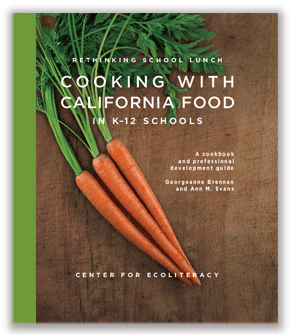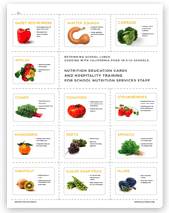Corporate leaders should quit hedging if they don’t want to miss out on a prime opportunity to seize a competitive advantage now!
By James Lyon
With BEX Asia 2011 recently over, it leaves much to ponder. And yes, while some headway seemed to have been made, unlike their Western counterparts, Asian companies have quite a bit of catching up to do when it comes to incorporating ‘green’ practices in their business model. “It may sound like a cliché but my advice to companies out there is to just do it’! Don’t fret about doing big things, just as long as you do something!” says Mr Jim McCallum, Senior Vice President of InterfaceFLOR Asia Pacific.
Recently a keynote speaker at the CSR Global Summit in Cebu, Philippines, McCallum spoke about how a brand could boost its credibility by leveraging on sound ‘green’ practices without the conventional dependency on huge advertising budgets. He also shared how progressive corporations like Interface Inc. are using sustainability as a key competitive driver.
“You could say our commitment to ‘Green’ is what makes us stand apart from our competitors. This is especially evident with our Mission Zero initiative, a sustainability strategy which aims to turn InterfaceFLOR into a zero-impact organization by 2020. Fundamentally, we strongly believe in what we’re doing and the fact that we’ve accrued massive savings in the process motivates us further to be good corporate citizens” says McCallum.
Incidentally, InterfaceFLOR, the modular flooring division of Interface Inc., a listed company, recently bagged the prestigious BusinessGreen Leaders Award 2011, Company of the Year. The UK award recognizes the trailblazing sustainability efforts of conventionally listed companies and their credible green business practices that make them beacons of green innovation and commercial success. Additionally, the globe scan survey on Sustainable Leadership 2011, listed InterfaceFLOR as number two on their sustainability index. InterfaceFLOR was also an exhibitor at the recent BEX Asia 2011.
Drawing away from the bigger picture, InterfaceFLOR is also taking simple steps to make big differences, McCallum explains, such as establishing manufacturing facilities close to their key markets. This resonates well with one of their sustainability markers which is to minimise carbon footprint by exploring ways in which they can transport their carpet tiles more efficiently to reduce waste and emission. It is a sustainable decision that makes good business sense as this leads to a reduction in transportation costs as well.
Still, one can’t help but ask ‘Can InterfaceFLOR really justify a sustainability index rating with mounting fears of an impending recession where customers are trying to make every dollar count? And can the company keep prices low but still sell sustainable products?
McCallumn explains “The index is meant to drive innovation throughout our supply chain and allow our customers to evaluate products on something beyond just price.” Since the inception of its sustainability efforts, InterfaceFLOR has successfully chalked up waste saving efficiencies in excess of 430 million dollars.
He added “Businesses exist to make money, but more than ever, corporate leaders are starting to discover there is a way to make money, be profitable and do the right thing. And when one company sets the pace, others will want to follow. It’s corporate peer pressure 101. No company wants to be the one that got left behind!”
With BEX Asia 2011 recently over, it leaves much to ponder. And yes, while some headway seemed to have been made, unlike their Western counterparts, Asian companies have quite a bit of catching up to do when it comes to incorporating ‘green’ practices in their business model. “It may sound like a cliché but my advice to companies out there is to just do it’! Don’t fret about doing big things, just as long as you do something!” says Mr Jim McCallum, Senior Vice President of InterfaceFLOR Asia Pacific.
Recently a keynote speaker at the CSR Global Summit in Cebu, Philippines, McCallum spoke about how a brand could boost its credibility by leveraging on sound ‘green’ practices without the conventional dependency on huge advertising budgets. He also shared how progressive corporations like Interface Inc. are using sustainability as a key competitive driver.
“You could say our commitment to ‘Green’ is what makes us stand apart from our competitors. This is especially evident with our Mission Zero initiative, a sustainability strategy which aims to turn InterfaceFLOR into a zero-impact organization by 2020. Fundamentally, we strongly believe in what we’re doing and the fact that we’ve accrued massive savings in the process motivates us further to be good corporate citizens” says McCallum.
Incidentally, InterfaceFLOR, the modular flooring division of Interface Inc., a listed company, recently bagged the prestigious BusinessGreen Leaders Award 2011, Company of the Year. The UK award recognizes the trailblazing sustainability efforts of conventionally listed companies and their credible green business practices that make them beacons of green innovation and commercial success. Additionally, the globe scan survey on Sustainable Leadership 2011, listed InterfaceFLOR as number two on their sustainability index. InterfaceFLOR was also an exhibitor at the recent BEX Asia 2011.
Drawing away from the bigger picture, InterfaceFLOR is also taking simple steps to make big differences, McCallum explains, such as establishing manufacturing facilities close to their key markets. This resonates well with one of their sustainability markers which is to minimise carbon footprint by exploring ways in which they can transport their carpet tiles more efficiently to reduce waste and emission. It is a sustainable decision that makes good business sense as this leads to a reduction in transportation costs as well.
Still, one can’t help but ask ‘Can InterfaceFLOR really justify a sustainability index rating with mounting fears of an impending recession where customers are trying to make every dollar count? And can the company keep prices low but still sell sustainable products?
McCallumn explains “The index is meant to drive innovation throughout our supply chain and allow our customers to evaluate products on something beyond just price.” Since the inception of its sustainability efforts, InterfaceFLOR has successfully chalked up waste saving efficiencies in excess of 430 million dollars.
He added “Businesses exist to make money, but more than ever, corporate leaders are starting to discover there is a way to make money, be profitable and do the right thing. And when one company sets the pace, others will want to follow. It’s corporate peer pressure 101. No company wants to be the one that got left behind!”


